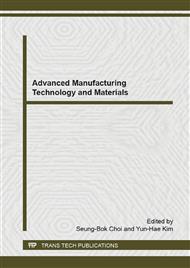p.121
p.125
p.129
p.133
p.137
p.142
p.147
p.155
p.159
Preparation and Characterization of Tetradecanol Microcapsule Phase Change Materials by Emulsion Polymerization
Abstract:
In this study, it was aimed at preparing and characterizating of poly (methyl methacrylate) (PMMA) shell microcapsules containing tetradecanol as phase change materials (PCMs) for thermal energy storage. The tetradecanol microcapsules were characterized by using scanning electron microscopy (SEM), fourier transform infrared spectroscopy (FT-IR), differential scanning calorimetry (DSC) and thermal gravimetric analysis (TGA). The test result show that the contents of tetradecanol in microcapsules nearly 57.5% and the latent heats of melting and freezing were found to be 120.7 and 118.4 J/g. TGA analyses also indicated that the microPCMs degraded in two steps and have good thermal stability.
Info:
Periodical:
Pages:
137-141
Citation:
Online since:
January 2015
Authors:
Keywords:
Price:
Сopyright:
© 2015 Trans Tech Publications Ltd. All Rights Reserved
Share:
Citation:


